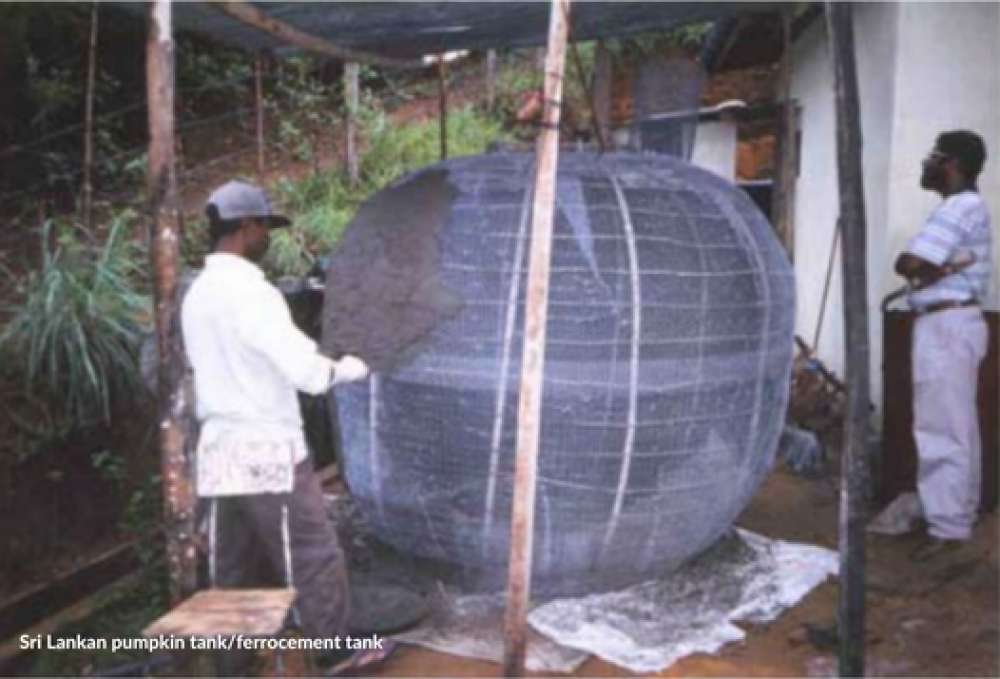06 December 2022
Rainwater harvesting around the world – Sri Lanka
Sri Lanka has a long, resolute history of hydraulic civilization that spans over two millennia and is an integral part of Sri Lankan agricultural heritage.

Sri Lanka is divided into 3 major zones: wet, dry, and intermediate. The wet zone gets rainfall from the Southwest monsoon from May-October, the dry zone gets rainfall from the Northeast monsoon from November-April and the intermediate area exhibits regional and seasonal variations.
Sri Lanka has a long, resolute history of hydraulic civilization that spans over two millennia and is an integral part of Sri Lankan agricultural heritage. The ancient agrarian revolution that was powered by irrigation engineering had many important economic, social, political, religious, and cultural implications and outcomes. The birth of irrigation engineering pre-dates the arrival of Buddhism on the island in the third century BC and witnessed a quantum leap since the time of King Pandukabhaya who built the medium-sized tank ‘Abhaya Wewa’ in Anuradhapura in the fourth century BC.
Another great example is the sophisticated rainwater-cum-reservoir systems in the Sigiriya rock fortress complex built by King Kasyapa in the 5th century. These reservoirs, tanks, and irrigation structures that relied on harvested rainwater were established to protect the communities in the dry zone from water scarcity. Sri Lanka’s ancient hydraulic civilization flourished for more than one thousand five hundred years until the devastating invasion of Magha of Kalinga.
“let us not allow a single drop of water to flow into the sea without being used for the benefit of mankind” - King Parakramabahu the Great (1153-1186 AD)

Even though the country has been practising rainwater harvesting for centuries, the systems that existed couldn’t satisfy the present-day domestic needs in systemic and scientific ways until the introduction of the Community Water Supply & Sanitation Project in 1996, as well as many other projects that were subsequently carried out by the government and non-government organizations. The community water supply and sanitation project (CWSSP) was implemented by the Ministry of Housing and Public Utilities, the joint initiative of the Government of Sri Lanka and the World Bank developed two designs - a subsurface brick tank and an above-ground Ferrocement tank (Sri Lankan pumpkin tank).


The first experiment of organized rainwater harvesting began in a village called ‘Dematawelihinna’ in the Badulla district. From there the concept was picked up very quickly, and the Lankan Rainwater Harvesting Forum (LRWHF) was formed in that same year (1996) to foster, disseminate, and research the potential of utilising rainwater as an option for domestic water supply throughout the country.
Projects and awareness programmes were rolled out to introduce and educate communities on the benefits and expediency of rainwater harvesting, as well as to train them to operate and maintain rainwater harvesting systems. The ongoing project ‘Safe Disaster-Resilient Drinking Water’ funded by United States Agency for International Development (USAID) promotes rainwater harvesting systems as a practical, disaster-resilient water supply option for floods and drought-prone areas. As a result of this 3-year project, safe drinking water was provided to nearly 17,900 people from 391 households, 10 rural hospitals and 48 schools in 3 districts.
The Climate Resilience Integrated Water Management Project by the Sri Lanka Red Cross Society mobilized the dry zone communities towards year-round access to a reliable and safe water supply and to adopt climate-resilient agricultural activities. While the Ministry of Environment is an implementing partner of this 7-year project, it is financed through a grant received from the Green Climate Fund (GCF) and co-financed by the Government of Sri Lanka. The project was aimed at strengthening the resilience of Smallholder Farmers in Dry Zone to climate variability and extreme events.
With adequate rainfall all over the country, rainwater harvesting has become a feasible option for providing safe drinking water to many communities living in the central hill country, north-central and southern dry zones, and also in some uphill localities in the wet zone. Over the last 2-3 decades, there has been a revival of rainwater harvesting, bringing much relief to households. Rainwater harvesting has been proposed and supported by the Government as an urgent measure to ensure that all communities have adequate water supplies throughout the year and to ensure that rainwater is used to charge groundwater. It has been revealed that beneficiaries of the rainwater harvesting systems were better able to cope with water stress than non-beneficiaries during the COVID-19 lockdown. The different systems, technology and practices adopted for rainwater harvesting in Sri Lanka are fairly successful compared to other developing countries.




